

Growing food is just a part of it. We can’t separate our motivation to sow seeds, water, weed, spread compost, harvest, and eat the result of all this from certain ecological, social, and political issues. These undercurrents inform our beliefs and give our choice of livelihood a deep meaning beyond simply the satisfaction of growing food that nourishes our bodies, our families, and our communities. A recurring theme in this book is the hope that what we are doing will have some impact beyond our region, that we are contributing to a movement that is echoed in many forms across the continent and beyond. What follows is a brief exploration of some of these political, environmental, and social issues. These are topics about which many books have been written, by people far more expert than we are but we hope to pique your interest and inspire you to read more (see our Bibliography).

To us, the term “food security” evokes a sense of threat as well as a sense of hope. Food security can be defined as “the availability of food and one’s access to it.” Increasingly, we are seeing food systems being dominated in powerful ways by corporations. For example, the concept of patenting a seed would have been completely abhorrent to farmers in the not-so-distant past.
Seeds and humans have co-adapted since agriculture began, some ten thousand years ago. The favourable response of seeds to human intervention is a testament to the wonderful complexities of natural adaptation that enable them to survive and thrive. We select seeds for the traits we value, such as size, taste, digestibility, and tolerance of different soil types and moisture levels. Seed has been traded, shared, and moved around the globe to be tested and enjoyed in different environments. It has responded well to human manipulation. Our existence and survival are bound up with the existence and survival of seeds. Think about what it means when corporations can patent the seeds we depend on for survival, and penalize those who grow the seeds without paying the licensing fees. When Monsanto Corporation bought Seminis Seeds in 2005, it was estimated that they took control of 40 per cent of the vegetable seed market in the United States and 20 per cent worldwide.1
Big seed companies develop seed varieties that are suited to industrial-scale growing, harvesting, and transport. They put little or no effort into preserving heirloom varieties or developing new varieties that would be well adapted to small-scale growing in different bioregions. They select for appearance, uniformity, ease of harvest, and storage, not for taste, resilience, and nutrition. For thousands of years, farmers around the world have contributed to developing a rich heritage of seeds. The corporatization of seed is threatening this heritage and resulting in the incredibly rapid loss of crop diversity.
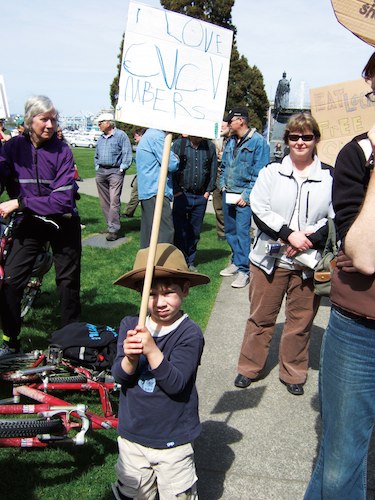
In this increasingly industrialized world, we small-scale organic farmers can feel as though we are moving against the grain. A twenty-two-year study headed by David Pimentel of Cornell University compared the economic, energetic, and environmental impacts of organic and conventional systems involving corn and soybeans.2 One of his conclusions was that the yields were close to the same in both systems but that the economic return was higher in the organic system.
The organic system required 35 per cent more labour, which was spread out over the whole season; the farmers participating in the study could perform a fair amount of it. In the conventional system, the labour requirements were heavy in the spring and fall, which necessitated more hiring of labour by the farmers. Thus, the hired labour costs in both systems were roughly similar. Four herbicides were applied in the conventional system, two of which were subsequently detected in water samples. One of these, atrazine, exceeded the Environmental Protection Agency’s maximum contaminant level. The organic system used 30 per cent less fossil fuel and, through the use of cover crops and organic inputs, actually increased the soil biomass and soil biodiversity, and contributed to water conservation. The study concluded that organic faming methods reduce the negative impacts of agriculture on the environment, and do so with yields comparable to conventional practices and a good financial return.
The general public seems to believe that large, highly mechanized farms are more efficient, and have higher productivity than small farms. An increasing number of studies, however, are concluding that small farms score the same, or higher, on both counts.3 Studies into the interactions around small farms are also concluding that they are agents of “food justice.”4 Food justice is a wide-ranging idea. It encompasses both the rights of consumers to nutritious, accessible food, and the rights of farmers to have control over their agriculture. Food justice also considers the ecology of food-producing regions. Food justice is a major component of the larger vision of food sovereignty. With industrial food systems, there is little opportunity for food sovereignty.
When farmers spend more time on the ground and less time on tractors, they are far more connected to what is going on with their crops, and with less land to care for, they can ensure that everything grows as well as possible. Since a greater variety of crops is usually grown on small farms they can tailor the needs of the crops to soil and microclimate conditions as they vary across the landscape. Total output tends to be higher per acre on small farms due to this diversity. Finally, selling products locally—directly to consumers—can bring a higher financial return for small farmers.
Large, monoculture farms, which have only one or two crops, are much more susceptible to pest and disease problems, which can spread extremely quickly through a crop. Lack of biodiversity means fewer beneficial birds and insects to keep pests in balance, and more dependence on chemical fungicides and insecticides, thus increasing costs. Large industrial farms are also limited by market-driven commodity prices, and have little control over their income. They also incur great environmental costs. The loss of topsoil to erosion, caused by excessive machinery use and lack of biodiversity, is a major problem across North America. Synthetic pesticides, herbicides, fertilizers, and the heavy concentration of animal manure have detrimental effects on soil, water, and biological organisms, and on the people who work on those farms.
Nitrogen fertilizer is synthesized through a process that creates ammonia from natural gas. Currently, 5 per cent of global natural gas consumption is used for this purpose. Ammonia is then a component in the forms of ammonium nitrate and urea, which are applied as fertilizer. This technology was developed when a huge surplus of ammonium nitrate, used for making explosives, was diverted to fertilizer production after the Second World War as a way of disposing of it. The production and application of nitrogen fertilizer make it a major greenhouse gas producer, due to the release of nitrous oxide, ammonia, and carbon dioxide. Globally, the most important natural source of nitrous oxide is known to be soil, because of the increasing concentrations of agricultural chemicals. Soil can account for 75 per cent of global nitrous oxide emissions.5
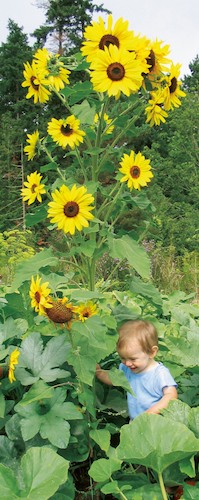
The highly soluble nature of fertilizer means that the runoff commonly causes eutrophication, a form of nutrient pollution, which disrupts the natural ecological balance in water systems. Algae in the surface layer proliferate, causing oxygen depletion below, and this results in the die-off of species. Various “dead zones” have been identified around the world where this process is occurring. A massive dead zone exists in the Gulf of Mexico, where the Mississippi River releases pollutants derived from agribusiness activities (primarily animal feedlot wastes and fertilizer and/or pesticide runoff) into the ocean. Its size varies, but it has covered an area up to twenty-one thousand square kilometres, or the size of New Jersey.6
Pesticides are a broad term for a class of chemicals that are used for the prevention, control, or decrease of pests. Pests could be insects, bacteria, weeds, fungi, rodents, nematodes, molluscs, or mites. Pesticides work by poisoning their subject. Like fertilizers, they came into broad use after the Second World War, when US chemical companies shifted their wartime research to opportunities in the domestic market. Teaming up with agricultural experts, they promoted the use of synthetic chemicals as pesticides. The most famous one is DDT, which was used among troops during the war to control typhus-spreading lice in southern Europe, and malaria-spreading mosquitoes in the South Pacific. DDT came to be considered the “wonder insecticide,” as it was inexpensive, effective on a wide range of insect pests, persistent in the environment, and insoluble in water, and didn’t appear to be toxic to mammals. It became the most widely applied chemical in human history. We now know it to be directly toxic to fish and crabs, and indirectly toxic to other organisms, having a devastating effect as it biomagnifies up the food chain to predatory birds such as hawks and eagles. DDT was banned in the US in 1973 but continues to be produced in developing nations.7
The spraying of insecticides to control insects, and herbicides to control weeds, is common practice on large and small non-organic farms. However, over 98 per cent and 95 per cent of these chemicals, respectively, reach destinations other than their target species.8 The use of pesticides has become so widespread that many of these target species, both plants and insects, develop resistance to the chemicals, creating a need for stronger chemicals. The number of insect species known to have displayed pesticide resistance has increased from fewer than twenty in 1950 to more than five hundred in 1990.9 Pesticide drift contributes to air pollution and threatens other species. Pesticides are found to pollute groundwater, waterways, and wells through spray drift, runoff, spills, and leaching through the soil. The problem is now so widespread in the US that maximum contamination levels have been identified for pesticides in public bodies of water. Pesticides are also identified as major soil contaminants, along with petroleum products, lead, and other heavy metals.
Bees are incredibly important contributors to the plant world as they are primary pollinators, participating in the sexual reproduction and cross-pollination of plants. Cross-pollination is essential for some species, and promotes genetic diversity for others. Pesticide misuse kills bees, either through direct spray on the worker bee or causing kills back in the hive by contaminating nectar or pollen. At least fifty-nine pesticides approved for use on crops in the US are categorized as “highly toxic” to bees, with an additional twenty-seven listed as “moderately toxic.”10
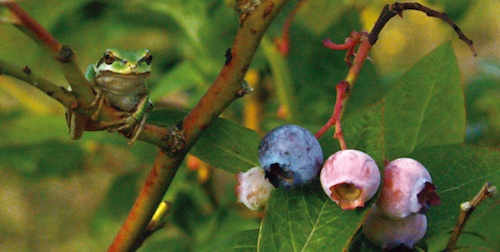
As organic farmers, we are committed to approaching the growing of food with an ecological mindset. There is no doubt that we are disrupting the land with our cultivation machines and rows of crops, and our weeding out of unwanted plant species. However, we grow or encourage the flowering plants that attract beneficial birds and insects, which in turn prey on pests. We are attentive to their zones of habitat around our fields. We constantly add organic matter to the soil, to help balance the nutrients and encourage microbial activity. We aim to replace, through natural means, the nutrients that are taken up by our crops. Ideally, our actions should leave the soil and the water table in better health than when we started. Those in our community who have been cultivating the same soil for a number of years are seeing these effects. Traditional forms of agriculture, like organic farming, were self-sustaining for thousands of years before the advent of synthetic fertilizers and pesticides. Traditional agriculture and aquaculture are still practised in developing countries all over the world, in a truly sustainable fashion.
The Green Revolution and Loss of Traditional Agricultural Practices
Traditional agricultural technologies are increasingly being threatened and replaced by industrial systems that fail to take into account the holistic and ecological nature of the earlier methods. The term “Green Revolution” refers to the industrialization of agriculture in developing nations between the 1940s and the 1970s. It is usually touted as having staved off starvation for millions, under the premise that traditional forms of producing food could not support the rate of population growth on the planet.
However, more people are hungry now than before the Green Revolution. This is hard to accept, because we are immersed in a culture that believes science will save us. While globally there is more than enough food produced, current distribution systems leave millions starving. The high costs of Green Revolution technology (hybrid seed, fertilizers, and pesticides) have driven small-scale farmers out of business. Food production has become the domain of large corporate farms that are part of governmental geopolitical agendas. Food prices have become disconnected from production costs, farmers have become alienated from the land, and people have become minions of big business, rushing out to buy the food products that are advertised rather than relying on their traditional foods. People are getting sick, the landscape is being ruined, and corporations are getting rich while farmers are going bankrupt.
The staggering complexities of food production and distribution systems are not adequately acknowledged in the understanding of history espoused by advocates of the Green Revolution. For example, in India, peasants grew a wide variety of legumes, fruits, and vegetables, which gave them food self-sufficiency. Their grain crops provided straw that was used as fodder for their cattle, which in turn produced milk, and manure for fuel and fertilizer. They saved their own seeds, and over time, developed thousands of varieties of crops, all locally adapted.
With the advent of industrial farming, US agencies such as the Rockefeller and Ford foundations brought their products to the developing world. They established co-operative relationships with the Indian government to promote an industrial, monoculture system of food production with promises of very high yields. As a result many farmers switched to growing wheat and maize. These were high-yielding varieties that required more nitrogen than their ancestors; they were developed to grow best with chemical fertilizers and pesticides. The plants tended to fall over under their heavy seed load, so they were bred to be dwarf in size.
Several things happened. Farmers indeed enjoyed greater yields. However, due to the smaller dwarf plants, there was much less fodder available for their farm animals, which meant less manure for fuel, resulting in the need to buy kerosene. Less manure also meant less organic matter to support soil fertility. Their crops became dependent upon chemical fertilizers and pesticides, because monocultures are not ecologically balanced and pests thrive under those conditions. Indian farmers were encouraged by their government to stop growing their food crops in favour of cash crops for export (wheat and maize). The farmers and their families had less to eat, and were reliant upon seeds and chemical inputs from an outside source, and thus were subject to price increases on those items.
As more grain was arriving on international markets, farmers were going hungry, their land was being stripped of fertility, and their wonderful genetic wealth of seed diversity was being lost. Vandana Shiva is a physicist and food activist, author of many books on food security, and winner of the Alternative Nobel Peace Prize in 1993. She writes that “. . . as more grain is produced and traded globally, more people go hungry in the Third World.”11 Furthermore, she claims that industrial monocultures that are maintained by intensive external inputs, such as fertilizers and pesticides, create food insecurity:
A study comparing traditional polycultures with industrial monocultures shows that a polyculture system can produce 100 units of food from 5 units of inputs, whereas an industrial system requires 300 units of input to produce the same 100 units. The 295 units of wasted inputs could have provided 5,900 units of additional food. Thus the industrial system leads to a decline of 5,900 units of food. This is a recipe for starving people, not for feeding them.12
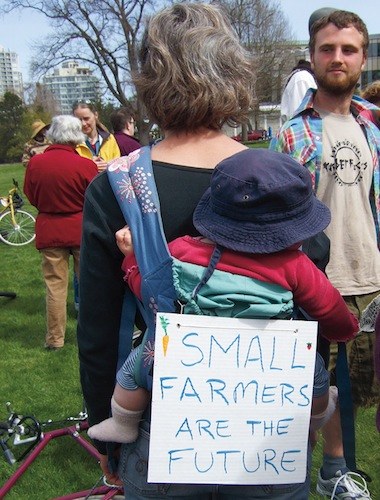
Social Costs of the Green Revolution
A look at the socio-agricultural perspective in the decades since the onset of the Green Revolution reveals a bleak picture: families losing ancestral land as their debt reaches crisis proportions is a story playing out all over the world. In a country like India, where farmers were already poor, this is resulting in the additional disaster of skyrocketing rates of farmer suicide.
In Punjab, the epicentre of the country’s high-tech agricultural “Green Revolution,” the United Nations scandalized the government when it announced that, in 1995–96, over a third of farmers faced ruin and a crisis of existence . . . This phenomenon started during the second half of the 1980s and gathered momentum during the 1990s. It has been getting worse. According to the most recent figures, suicide rates in Punjab are soaring. As one newspaper put it, this sad end to the farmers who were meant to have thrived under India’s brave new agricultural future is a “Green Revocation.”13
The problem is not isolated to India and thus cannot blamed on inadequate or corrupt government leadership. In China, farmer suicide and attempted suicide rates through ingesting pesticides are high. “Of a sample of 882 suicides in China from 1996 to 2000 . . . agricultural labourers made up over half the dead.” Farmer suicides have increased in wealthy nations as well. It was widely reported in the media in 2006 that farmer suicide rates soared to one every four days in rural Australia. Though these suicides were closely related in the media to a five-year drought, the figures show one suicide every six days a decade earlier, according to an academic study conducted from 1988 to 1997.14 “In the UK, farming has the highest suicide rate of any profession.”15 Here in North America we are familiar with the disappearance of the family farm, and the distress and depression caused by the loss of family land due to crippling debt burdens.
Several of the problems associated with industrial agriculture and our industrial food supply can be illustrated by the rise of corn as a staple crop and commodity in the US Farm Belt. Michael Pollan writes a compelling chronicle of the history of corn in his book The Omnivore’s Dilemma. We have relied heavily on his work for the pages that follow.
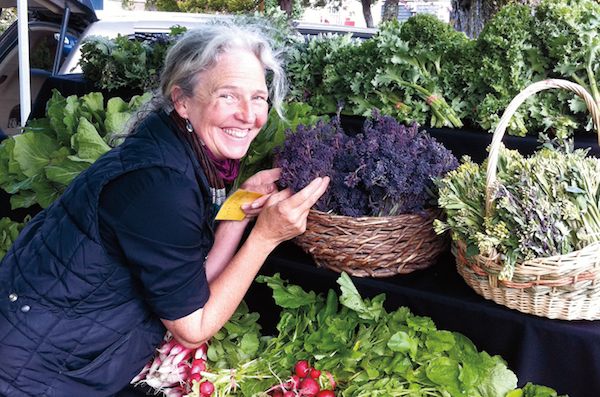
Corn and soybeans are grown on a rotational basis, and both have become mainstays in the processed-food industry in North America. When seed breeders started developing and tailoring hybrid corn seed to suit industrial production methods, the game changed.
Hybrid F1 was the product of breeding two open-pollinated parent corn plants together. This first-generation hybrid had some unusual characteristics: genetically identical plants, and significantly higher yields than its parents. These traits alone set the stage for mechanical cultivation, and more land was allotted to corn production.
Significantly, breeders found that seeds saved from F1 hybrid cobs and replanted produced very poor results, making them useless to the farmer in subsequent years. The farmer had to return to the breeder to buy more of the first-generation seed.
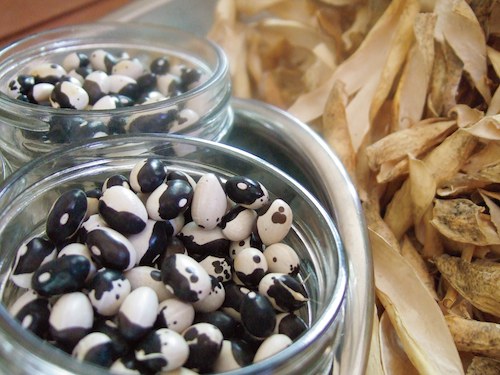 Beans are one of the earliest known plants cultivated by humans. These are Orca beans, an heirloom variety from Mexico. They can easily be saved and propagated by the home gardener.
Beans are one of the earliest known plants cultivated by humans. These are Orca beans, an heirloom variety from Mexico. They can easily be saved and propagated by the home gardener.
Though common today, the concept of buying seeds from a corporation was revolutionary in the farming world. Until the 1930s, farmers saved their own seed or traded with neighbours, and over time these seeds developed genetic characteristics that adapted them to their specific ecological circumstances. Hybrid corn, however, offered such huge yields and was so well adapted for mechanical harvesting that farmers steadily shifted more and more production to this cash crop. In the 1920s yields were roughly twenty bushels per acre. By the 1950s they had risen to seventy to eighty bushels per acre, and with further tinkering, including genetic modification, yields can now reach two hundred bushels per acre. Hybrids have thicker stalks and stronger root systems than their open-pollinated ancestors, which allows them to be planted extremely closely: thirty thousand seeds per acre, as opposed to eight thousand in the 1950s.
The rise of corn could not have taken place without the concurrent rise in the application of synthetic fertilizer. Before it was made available through the use of fossil fuels, farmers were dependent upon the nitrogen that was “fixed,” i.e., collected from the air and released into the soil by bacteria living on the roots of legume plants. Crops were regularly rotated with legumes to restore the nitrogen that had been consumed by the preceding crop. Corn was used partially as fodder for animals, which in turn produced manure, which was spread on the land to restore vital nutrients. Whereas farmers had previously relied on the energy of the sun for nitrogen supplies and thus soil fertility, with the advent of fertilizer, they came to rely upon fossil fuels. The biological cycle was broken, and farmers no longer needed legume rotations or animal manure.
An industrial mindset became prevalent, and monoculture the norm. This transformed North American farms. Tractors and mechanization contributed to the displacement of horses, and the other farm animals disappeared to leave more land for corn production. Much diversity of livestock, landscape, crops, and people also disappeared, giving way to our current monotonous agricultural landscapes: rows and rows and rows of corn, punctuated only by roads, fences, and far-flung farmhouses.
As in India and other areas affected by the Green Revolution, farmers shifted away from sustainable, diverse production of plants that not only fed their families and their livestock but also maintained the fertility of their soil. They moved toward the production of a commodity, corn, which could not feed their families, and which bankrupted their soil fertility, causing dependence on external chemical inputs.
Accompanying the corn-yield breakthroughs were changes in federal farm policies, which removed the checks and balances that had safeguarded both farmers and the marketplace from wild fluctuations in supply and demand. Previously, farmers were given the option of a government loan if the supply of a storable commodity was high and prices were down. They could store their grain in a government granary until the price came back up, then sell and repay the loan. If the price stayed depressed, they would give up their grain to pay back the loan, and the government would store it for a longer period, selling it at some future time when supply was low and prices came up. This didn’t cost the government much, since most loans were repaid. More importantly, it discouraged dumping by regulating the amount of product on the market, and thus the prices, keeping surpluses back and releasing more grain when times were lean.
During the Nixon administration, these and other safeguards were eroded in the interests of increasing production and driving down prices. Farmers were encouraged to grow “fencerow to fencerow” and “get big or get out.” This served the interests of both corporate food processors, which were looking for cheap raw materials, and grain exporters. The federal granary was abolished and loans were replaced with direct payments: farmers were compensated for the amount of money they lost below the target price. Rather than keeping an excess of corn out of the market, this encouraged farmers to sell their corn at any price. Predictably, the price kept falling.
The target price upon which the subsidies are based has gradually been legislated down over the years and farm incomes have fallen along with the prices, forcing thousands of farmers into bankruptcy. The remainder, locked into corn and soybean production due to their machinery, infrastructure, and subsidy structure, and the insistence of grain elevators to be supplied with only those two crops, attempt to produce ever more, just to keep up with their bill and debt payments. The result is twofold: staggering amounts of corn being produced per acre, and ever lower prices. What would seem to be a success has become a spiral of financial failure for these farmers Not only does the US federal treasury now spend up to five billion dollars a year subsidizing this cheap corn, but subsidy payments make up nearly half of net farm incomes.16
Through subsidies, government policy is largely responsible for the loss of small farms. Now, corporate-owned farms dominate food production in the US.
In 1999, over 70 per cent of subsidies went to just two commodity crops: corn and soybeans. These supports promote industrial-scale production, not small, diversified farms, and in fact create an environment of competition where subsidized commodity producers get help crowding the little guys out of business. It is this, rather than any improved efficiency or productiveness, that has allowed corporations to take over farming in the United States, leaving fewer than a third of farms still run by families.17
The beneficiaries of commodity corn are corporate agribusiness entities, which are busy finding all kinds of uses in consumer products for what has become a cheap, abundant raw material. We, the consumers, are eating this corn in its many guises, mostly in processed food: not only as corn syrup, corn oil, corn flour, and corn starch, but also under the names of glucose syrup, maltodextrin, crystalline fructose, ascorbic acid, lecithin, dextrose, lactic acid, lysine, maltose, MSG, polyols, caramel colour, and xanthan gum. Corn is used in the industrial sector as starches for strengthening and finishing. It is a component of textiles, plastics, adhesives, construction materials, pharmaceuticals, and cosmetics. Corn sweeteners are not only in food and beverages, but also in intravenous fluids, vitamins, amino acids, and alcohols. Corn is used as animal feeds and in pet foods. Most recently, an industry has developed to produce ethanol from corn.18
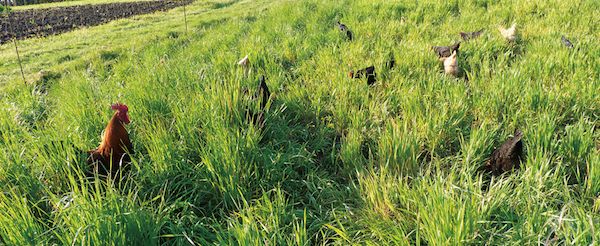
Corn-derived products have arisen more out of the need to use up what Michael Pollan calls a “huge surplus biomass” than to meet any true requirement. Industrial animal feedlots developed as one of the ways to absorb these massive amounts of corn. Virtually all of our chicken, beef, and pork now comes from factory farms where tens of thousands of animals are crammed together and fattened up as quickly as possible. Pigs and chickens are adapted to eating corn, but cattle are particularly inefficient at converting corn into meat, having evolved as grass eaters. They have to be introduced to the corn diet gradually and they suffer from a near-constant state of bloat and indigestion. For this reason, feedlots employ resident veterinarians and cowboys whose sole job is to patrol the pens looking for cows in distress. Crowded into small pens, the animals stand in their own excrement from the time they arrive at the feedlot for “finishing.” They are transported in inhumane conditions, and slaughtered en masse in production-line facilities that, like the rest of our industrial world, are more about output per hour than the health and well-being of the animals. Three key issues associated with factory farms fly in the face of sustainable agriculture: cruelty to animals, overuse of antibiotics, and manure disposal.
Laying hens live in tiny cages, stacked floor to ceiling, in which they cannot stretch out a wing. Their beaks are clipped early on to minimize the effects of stress-induced pecking of their cage-mates. When their egg production begins to slow they are “force moulted”: starved of food, water, and light to stimulate one more bout of egg-laying before they are killed.
Broiler birds are packed together into huge warehouses, and never see the light of day. The ammonia rising from the vast amounts of waste building up underneath them causes burns to their skin, eyes, and respiratory tracts. They are bred for large thighs and breasts, and for rapid weight gain, which can cause spontaneous heart attacks as their organs cannot keep up with their body weight. Deformed and broken legs are common for the same reason.
Sows are kept in cages so small that they cannot even turn around. Piglets are weaned at ten days because they grow faster on hormone- and antibiotic-fortified feed. However, the need to suck doesn’t leave them, causing them to chew on the tail of the pig in front of them. After some time in close confinement, without seeing natural light, unable to exercise, roll in mud, root, or breathe fresh air, pigs become demoralized, and will allow other pigs to chew their tails to the point of infection. The USDA recommends tail-docking as a means to treat this problem. The tail is cut off only partially, to a stub, rendering it more sensitive, so the animal will be in more pain and will fight back to defend itself.
Veal calves are kept in solitary confinement. Movement is discouraged so their muscles stay soft and the flesh remains tender. They are deprived of light for most of the four months of their lives, and are fed a diet deficient in iron to keep their flesh pale and appealing to consumers.
Antibiotics are a crucial component of industrial meat production. The animals are raised in conditions for which they have not evolved; they are subject to unnatural diets and intense crowding, which cause stress and prohibit normal socialization. These conditions leave the animals prone to disease. Antibiotics are used not only for medical purposes; they are routinely added to feed to speed weight gain. This translates into greater profits for the industry. According to some estimates, 70 per cent of the US production of antibiotics goes to livestock. This overuse leads to the rapid evolution of “superbugs” or antibiotic-resistant strains of bacteria. Through runoff, antibiotics from urine and manure accumulate in waterways, disrupting natural bacterial balances and eventually turning up in drinking-water supplies.
Wendell Berry once wrote that when we took animals off farms and put them onto feedlots, we had, in effect, taken an old solution—the one where crops feed animals and animal waste feeds crops—and neatly divided it into two new problems: a fertility problem on the farm and a pollution problem on the feedlot. Rather than return to that elegant solution, however, industrial agriculture came up with a technological fix for the first problem—chemical fertilizers on the farm. As yet, there is no good fix for the second problem.19
One of the most beautiful things about mixed organic farms is that there is very little waste: manure is a valuable resource for soil fertility. In the concentrations produced by the industrial system, however, it is a pollutant. Organic farmers cannot use this manure because it is contaminated by antibiotics and genetically modified feed grains. Compared to chemical fertilizers, manure is bulky and inconvenient, so conventional farmers don’t use all of the excess either. Tragically, it sits unused, leaching nitrates into waterways, contributing to eutrophication, and causing disease outbreaks. Human health is put at risk, as in September 2006, when two hundred people in North America were made dangerously ill and three people died from eating spinach irrigated with groundwater contaminated by E. coli bacteria from feedlot manure.
The lethal strain of E. coli known as 0157:H7, responsible for this latest outbreak of food poisoning, was unknown before 1982; it is believed to have evolved in the gut of feedlot cattle. These are animals that stand around in their manure all day long, eating a diet of grain that happens to turn a cow’s rumen into an ideal habitat for E. coli 0157:H7. (The bug can’t survive long in cattle living on grass.)20
It is entirely possible to avoid these problems of antibiotic overuse and manure concentrations by raising livestock on pasture for their whole lives. The only reason we don’t is that in the current system of subsidized, high-input corn production, it is cheaper to finish them in feedlots. The current industrial food system distorts the true cost of production. Our subsidized system, which props up large agribusiness, actually leads to environmental degradation. If artificially cheap grain was not available, or if farmers had to clean up nitrate pollution or pay for their carbon emissions, more sustainable production methods would be economically viable.
Reducing a food-production system to an industrial model costs us greatly in terms of health and environmental damage. The only apparent benefit is cheap food. Ironically, even this “benefit” is costing us, since the cheapest food to come from this system is the unhealthy, processed food that is leading to so many of the health issues that are clogging our arteries and our health-care system. When we take a broad view, the illusion of the low cost of food is exposed.

It is not only the environment that suffers from policies that keep food as cheap as possible. Poor labour standards are another consequence of this system. Even here on Vancouver Island, farmers bring workers up from Mexico because they are unwilling provide working conditions that would appeal to the local labour force. Chemical use on farms, and the lack of safety equipment, has led to myriad health problems in farm workers. They are also often put in physical danger. In March 2007, in the Fraser Valley of BC, an overcrowded van carrying farm workers rolled over. Three workers were killed and fourteen were injured. The van was designed to hold ten people but was transporting seventeen, having had its seats removed and replaced with unsafe wooden benches. This accident could have happened to any vehicle, but because there were no seatbelts, people lost their lives. This is not an isolated incident. The pressure on farmers to keep prices low encourages them to cut corners wherever they can.
The next time you are in the grocery store, take a minute to think about the price of an “affordable” produce item. Consider what’s behind it: the grocery store’s markup, the distributor’s markup, packaging, refrigerated transportation, water, machinery, diesel, seed, fertilizer, and land costs. How much is left to pay for all the labour that went into seeding, weeding, harvesting, and packing it? Unfortunately, a higher price in the grocery store doesn’t necessarily mean better labour standards. The only way to know for sure is to know your farmer.
We didn’t know this complex reality when we started farming. We had a vague notion that something was wrong, but we hadn’t connected the dots. When you do something well, you have a sense of its true value. After working hard to grow a bed of beautiful lettuce, we have no hesitation in charging $3.00 per head at the market. Seeing an imported head in the grocery store for $0.99 brings home the reality of the corners that must have been cut. The longer we farm, the more knowledgeable and passionate we become about the issues behind our food system. It’s impossible for us not to be advocates, activists, and educators. At the same time, our first goal is finding a better way to grow more and more food to change our little corner of the system.
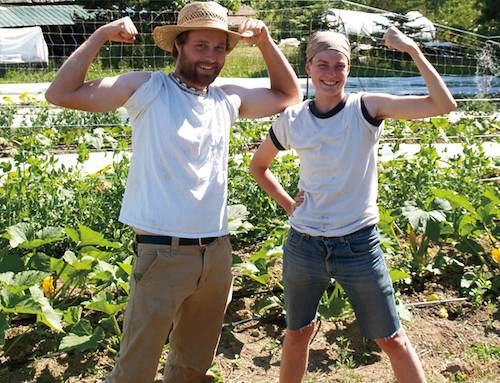

1 http://www.seedalliance.org/index.php?page=SeminisMonsanto
2 Pimentel et al, 2005, “Environmental, Energetic, and Economic Comparisons of Organic and Conventional Farming Systems,” Bioscience, Volume 55, pp. 573–582
3 Peter Rosset, 2003, “The Multiple Functions and Benefits of Small Farm Agriculture in the Context of Global Trade Negotiations, The Society for International Development, 43(2), pp. 77–82
4 Utviklingsfondet/The Development Fund, Norway, 2010, “A Viable Food Future,” retrieved June 7, 2011, from www.utviklingsfondet.no/viablefoodfuture/
5 J.J. Yienger and H. Levy II, 1995, “Empirical model of global soil-biogenic Nox emissions,” Journal of Geophysical Research, Volume 100, pp. 11447–11464
6 National Geographic, 2008, “Dead Zone,” encyclopedia entry, retrieved from education.nationalgeographic.com/encyclopedia/dead-zone/
7 Patricia Muir, 2007, “A History of Pesticide Use,” retrieved from http://people.oregonstate.edu/~muirp/pesthist.htm
8 G.T. Miller, 2004, Sustaining the Earth, 6th edition, Thompson Learning, Inc., Pacific Grove, California, pp. 211–216
9 Leo Horrigan et al, 2002, “How Sustainable Agriculture can Address the Environmental and Human Health Harms of Industrial Agriculture,” Environmental Health Perspectives, May, p. 447
10 Matt Wells, “Vanishing bees threaten US crops,” BBC News, Florida, retrieved from http://news.bbc.co.uk/2/hi/6438373.stm
11 Vandana Shiva, 2000, Stolen Harvest: The Hijacking of the Global Food Supply, Cambridge, MA: South End Press, p. 13
12 Ibid.
13 Raj Patel, 2007, Stuffed and Starved: Markets, Power, and the Hidden Battle for the World’s Food System, Toronto: HarperCollins, p. 25
14 ABC Television Media Watch, “The Decade Old Headline,” February 2007, retrieved from http://www.abc.net.au/mediawatch/transcripts/s1869891.htm
15 Patel, op. cit., p. 28
16 Michael Pollan, 2006, The Omnivore’s Dilemma: A Natural History of Four Meals. New York: Penguin, p. 24
17 Steven L. Hopp, 2007, in Barbara Kingsolver, Animal, Vegetable, Miracle: A Year of Food Life, Toronto: HarperCollins, p. 206
18 Pollan, op. cit., p. 37
19 Pollan, op. cit., p. 54
20 Pollan, 2006, “The Vegetable-Industrial Complex,” The New York Times, October 15